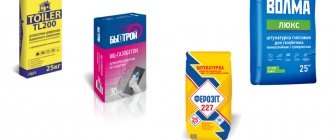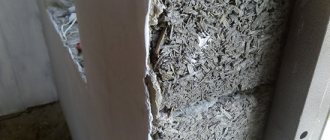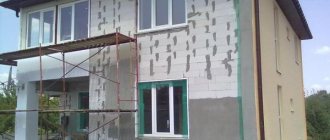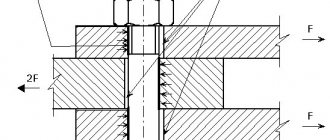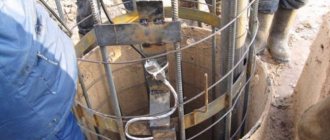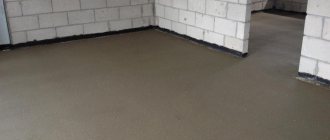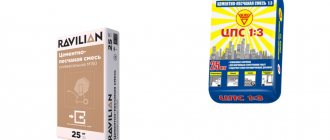Usually, beginners have difficulty choosing what is suitable for leveling walls: gypsum or cement plaster. Indeed, in order to correctly decide which plaster to choose for the kitchen or bathroom (moisture-resistant plaster is required), you need to clearly understand what the difference is between these materials, and in what conditions which is preferable.
Which plaster is suitable for interior work?
Manufacturers offer a wide range of plaster mixtures. Some are used inside, others - outside rooms and premises. After assessing future finishes, experts determine whether gypsum or lime plaster is better suited. But this does not mean their versatility; the choice must be made based on their purpose. They differ in price, properties, and advantages. A mixture that meets the quality has several properties:
- Plastic.
- Water repellency.
- Vapor tightness.
- Resistance to mechanical and weather influences.
There is also a leveling type of plaster mixture for rough finishing, which eliminates cracks, levels the surface, and covers concrete walls, brickwork, wood, gas silicate blocks, expanded clay concrete, and foam blocks.
Therefore, the answer to the question of which plaster is better is this: each is designed to perform its function in repairs.
Note! A finisher's job well done depends on his or her adherence to the process.
Which one to choose, gypsum or cement?
These mixtures are used for finishing renovations in houses and apartments. Cement plaster was obtained by combining the main ingredient with sand and lime; now there are many types of such a ready-made mixture. It is suitable for finishing:
- Facades.
- Cellars.
- Vann.
- Stan.
The surface treated with a cement mixture is durable, which is a positive aspect in finishing both inside and outside.
Gypsum plaster is a dry mass containing plasticizers. To obtain a paste-like consistency, it is diluted with water.
Gypsum plaster:
- easily fits on aerated concrete and brick walls;
- it is used to prepare surfaces for painting and wallpapering;
- It has thermal insulation, sound insulation, fire hazard properties, absorbs moisture, which creates a favorable microclimate in the apartment.
However, it is completely unsuitable for exterior finishing of houses and buildings with high humidity; cement is better suited for such options.
Where are they used?
Cement plaster is used for:
- interior or exterior work in any premises, even in unheated and damp ones, including basements, outbuildings, garages, entrances, balconies, loggias;
- finishing of facades, plinths, fences, especially those exposed to aggressive mechanical influences;
- filling joints when laying walls made of foam or gas blocks;
- processing of concrete structures in order to increase heat-insulating properties;
- restorations subject to compatibility with the previous material;
- finishing surfaces exposed to temperature changes;
- decoration of walls or ceilings where frequent repairs are impossible.
Gypsum plaster is used for:
- leveling and finishing of internal walls in rooms with normal humidity;
- ceiling decoration;
- leveling walls with large differences, application in several layers is acceptable;
- finishing surfaces for which cement is unsuitable - wooden, painted, ceramic;
- preparing walls and ceilings for painting or wallpapering.
Important! Gypsum solutions are not suitable for façade finishing due to their low moisture resistance. Not recommended without additional waterproofing for bathrooms, showers, and kitchens.
You can protect plaster from moisture by applying an acrylic primer. And if direct contact with water is possible, then the walls are covered with waterproofing mastic or tiled.
Pros and cons of cement mortar
Cement mortar is used in construction. Its advantages:
- affordable price, high adhesion strength;
- wide choose;
- moisture resistance;
- retains plasticity for a long time.
Minuses:
- Cracks appear after drying.
- Heaviness of the solution.
- The complexity of the plastering process.
- Poor application on concrete and wood surfaces.
- Long hardening time.
There is still no other alternative to cement mortar.
What is the difference?
Already from the name it is clear that the basis of the gypsum building mixture is gypsum, and in cement plaster the main component is cement. The purpose in both cases is the same - to level the surface before applying the final finish.
Cement-sand mixtures are a coarser material that is more often used for outdoor work, since dried cement is not afraid of high humidity and temperature changes. After hardening, its crystals grow into each other, forming strong bonds.
Gypsum mixtures are used exclusively in indoor areas with low and normal humidity levels. For example, in a bathroom it is not recommended to decorate the walls with plaster, even under tiles. Moisture will gradually penetrate through the seams, which will lead to a decrease in the strength of the gypsum plaster and the tile layer will sooner or later fall off.
Pros and cons of gypsum plaster
Rarely does the design of apartments, country houses, restaurants, hotels, exhibition halls and offices take place without this material.
Advantages:
- ease of installation;
- imitation of stone, brick;
- consumer availability;
- a light weight;
- naturalness of the material;
- softness, plasticity;
- heat.
The disadvantages include:
- High water absorption, poor resistance to frost.
- Difficulty in cleaning.
- Gypsum cladding is more suitable for interior work. You should not take risks and cover it with protective agents; it has low resistance to climatic changes.
Gypsum cladding is made in different textures and formats, but, despite some nuances of the material, it is in demand among buyers.
Additional Information! Dry plaster includes plasterboard, produced in sheets. It is used to cover ceilings and walls, replace plastering, install partitions and multi-level structures. The only drawback is the limited strength of the material.
Which plaster to choose for leveling walls
You can achieve perfectly smooth walls using drywall, special solutions or plaster. The choice of option depends on personal preferences and is determined by the material from which the walls are made. To level out large uneven areas, it is better to use plaster with a cement or lime base. To finish walls with small potholes and cracks, another plaster is used to level the walls:
- silicone - consists of mineral fillers, silicone resins and pigments, can be used in any room;
- acrylic - includes mineral components and acrylic resins, is prone to flammability, and therefore is not suitable for leveling walls in the kitchen and in areas with high temperatures;
- silicate - a universal mixture consisting of mineral filler, pigments and liquid glass, provides high quality coating;
mineral - the most budget option, allowing you to achieve a unique decorative surface, contains cement, lime and marble chips.
Plaster is used in the process of finishing a room. It is needed to level walls, hide depressions and cracks, seal seams between masonry, etc. Before wallpapering, the walls must be treated with plaster. Otherwise, due to the uneven surface, the wallpaper will overlap each other or, conversely, a gap will appear between the joints of the two canvases. In addition, plaster has good thermal insulation properties - it does not let cold air into the room and does not let warm air out.
Sometimes plaster is confused with putty. Putty and plaster are very similar in properties, but there is a significant difference - plaster is used to level walls with a large curvature and in appearance it is similar to facade plaster, since it contains filler. And then putty is applied to smooth out the grainy texture of the plaster.
Which plaster is best for apartment walls? This question cannot be answered unambiguously, because when choosing a coating, it is necessary to take into account the material of the walls (concrete, brick walls) and in what conditions the plaster will be used (high humidity, normal temperature conditions, etc.). There are several types of plaster based on composition: gypsum, cement, lime, clay. Plasters with gypsum and cement are more practical. Sometimes the binding elements are combined: lime mass is added to the cement-sand mortar.
Comparison of plasters, characteristics
Plaster mixtures are universal materials for finishing almost any surface. When using them:
- vertical and horizontal seams are filled;
- surfaces are leveled, cracks and unevenness are eliminated;
- additional fire protection is created;
- heat and sound insulation increases.
To understand how gypsum plaster differs from cement plaster or from other types of mortars, you need to read their description:
| Types of mixtures for interior finishing | Properties | Characteristic | Drying time |
| Cement | It is affordable and widely used in construction. | Suitable for rooms with high humidity, bathrooms. | Requires a long drying time of up to 7 days. Acceleration of this process threatens cracking of the layers. |
| Plaster | It is a good heat insulator. Not suitable for wet areas. | Excellent leveling of ceiling surfaces. | Quick drying in 3-4 hours |
| Limestone | Has bactericidal properties. Low strength. | It contains cement, but despite this it is suitable for wooden surfaces. | Dries quickly up to 10 hours. |
| For external use | |||
| Cement for facades | It is cheap. It is vapor permeable. | The outer walls of the building are finished with it, after finishing they breathe and do not become damp | Depending on weather conditions and the layer being applied, it will take several days to dry the walls. |
| Silicone | Plastic and expensive material. | Fits well on the surface. The appearance does not deteriorate even when the walls shrink. | Fast drying. |
| Silicate | Its basis is liquid glass. It has insulating properties and moisture permeability. | Fast adhesion, perfect surface coverage. | Fast hardening. |
| Acrylic | Moisture resistant, low cost, strength, long service life. | Exterior wall decoration for decoration. | From 1 hour to 3 |
The price difference between them is almost unnoticeable. As can be seen from the characteristics of the mixtures, it is better to use gypsum or lime plaster for interior decoration. When choosing these mixtures when purchasing, you need to pay attention to the information on its use on the packaging.
Methods of application and leveling
Plaster is applied:
- manually - the mass is smeared by hand with virtually no tools;
- instrumental - they create drawings with devices;
- in a mechanized way - large areas are processed, helps to combine several stages of work, and evenly apply the plaster layer.
Leveling the surface in apartments is carried out with a plumb line or building level. Working tools – spatula, rules, graters. In industrial buildings, alignment is carried out with beacons.
Curing and drying times
Compliance with technology in finishing work does not delay the construction process. Rapid curing and drying of surfaces is affected by:
- Weather.
- Microclimate of the room.
- Overlay layer.
The finishing thickness is small, up to 10 mm. A layer of 20-40 mm dries up to 14 days, layers of 50-80 mm dry up to 20 days.
Combination of gypsum and cement
Is it possible to apply gypsum plaster or putty over cement plaster? Yes, this is common practice. When finishing, walls are often painted with a cement-based composition, and a smooth finishing layer of Rotband is placed on top.
Important conditions : you need to wait until the base dries, then be sure to apply a primer between different layers.
But applying cement plaster over a plaster wall is a bad idea .
The plaster simply will not withstand its weight, and the entire finish will crumble. It is worth noting that there are cement-gypsum compositions on sale that combine the advantages of both types, for example, Prospectors MIXTER / MIXTER.
According to the manufacturer, this gypsum-cement plaster is intended for interior spaces with normal and high humidity. This is a moisture-resistant, vapor-permeable material, plastic and easy to apply. The technical characteristics with this mixing turned out to be average between gypsum and cement plaster:
- Consumption for a layer of 10 mm - 10-11 kg/m2
- Water consumption - 0.36-0.42 l/kg
- Setting time - 40 min
- Adhesion to the base - 0.5 MPa
- Layer thickness - up to 60 mm! without using plaster mesh
- Price - 320 rubles per 30 kg bag.
In addition to the main components, this mixture includes a light filler and high-quality modifying additives.
Is it possible to mix cement and gypsum plaster yourself to get a plastic, durable and moisture-resistant solution? No, it won't work that way. Gypsum and cement have different drying times, and if they are mixed by eye and without adding modifiers, the plaster layer on the wall will become covered with cracks. It is better not to experiment with such works so as not to waste time and money.
Base Compatible
When choosing the type of plaster, pay attention to its adhesive qualities:
- gypsum solution. Adheses well to many materials;
- cement plaster. The list of surfaces with which it has good adhesion is limited. Cement does not adhere particularly tightly to wooden, concrete or painted surfaces. Additional measures help improve the quality of adhesion, but they are generally not friendly with plasterboard sheets, as well as cellular concrete.
Gypsum plaster has more variations in compatibility with a variety of wall building materials than CPR.
Limitations of use
When deciding which plaster to choose - cement or gypsum, you should also pay attention to the fact that the former has some limitations in use. For example, this includes the complex application process and long drying time. The work should be carried out in several stages. First, the material is applied by spraying, then throwing, then it is rubbed and sanded.
In order to get a perfectly flat surface, you should work hard, because not all craftsmen have the necessary skills. But with gypsum such problems usually do not arise. It dries quite quickly, which cannot be said about the cement layer. This may take about three weeks, even under these conditions if you applied a thin layer. The surface turns out to be porous, it is not suitable for decorative finishing and has a dark tint, which means it requires the application of putty and further sanding. Cement mixtures are not decorative. The exception is formulations with special additives.
If you can't decide whether to choose cement or gypsum plaster, you should consider both. The second one is more flexible and does not shrink. The consequence is that it is an ideal option for leveling internal walls. Drying occurs faster, and there is no need to putty the wall, because the structure is already smooth.
Complexity of work
It is much easier to work with gypsum than cement because:
- gypsum plaster does not require preliminary preparation of the walls;
- gypsum can be applied in a maximum of two layers, and when working with cement, at least 3 layers will be required - spray, primer, covering. If you plan to paint the walls, you will need a fourth layer - grout;
Photo: grouting cement plaster
- The gypsum mixture is applied without difficulty and easily adheres to the base. CPR requires physical effort, since you need to rub it in with pressure or throw it on the wall;
- Working with gypsum is easier than working with cement mixture, so it is better for beginners to buy gypsum plaster.
Features of cement plaster
The main component of cement plaster is Portland cement of various brands. Moisture is necessary for the strength of the mixture, otherwise cracks and chips will form when the plaster dries.
Due to its characteristics, cement is perfectly combined with other materials. This is a good quality, because to improve the structural qualities of the mixture it is necessary to add various additives and plasticizers. Lime is added to the mixture to increase plasticity. To limit moisture loss and subsequent destruction of the layer, a primer is introduced into the mixture, which serves as a barrier to moisture leaving the solution. To improve thermal protection, fillers are added to the solution - sand, sawdust.
Cement plaster has many advantages:
- High strength.
- Resistant to moisture.
- Waterproof.
- Low cost of solution.
- Possibility of improving technical characteristics by introducing additives.
Disadvantages of cement plaster:
- Long process of strengthening and drying.
- Not all materials can be laid (plastic, wood).
- Large weight and therefore impossible to use on weak foundations.
- Labor intensity of work.
- The presence of defects after applying the layer.
- Lack of a smooth and even surface without sanding.
Durability
Plaster compositions do not have strict limits regarding service life. Experts believe that 20-30 years is a pretty good indicator for gypsum and cement materials. However, there are cases where cement finishing from the mid-19th century has been perfectly preserved to this day. Gypsum plaster without obvious catastrophic situations can also last 50 years or more.
We can conclude that according to the durability criterion, gypsum with cement is almost equal .
Gypsum solutions
Gypsum is a soft binder for the production of plaster used for interior work. The fact is that the material easily absorbs water and softens when wet. Therefore, gypsum plasters are used only for finishing dry, ventilated rooms.
Advantages of the material:
- Light weight;
- No shrinkage;
- The plaster is environmentally friendly without chemical additives;
- It allows steam to pass through and the walls “breathe.”
The main disadvantage is the fear of water.
There is an opinion that nails and various fasteners cannot be driven into plaster. This is a misconception: if the base under the finishing is strong, for example, brick or concrete, then the fasteners should be inserted into the supporting structure, choosing the appropriate length of dowels, screws and nails.
Cost and moisture resistance
One cannot help but highlight the low cost. The cement variety of plaster is 2 times cheaper than gypsum. This applies to ready-made formulations and those mixed independently. It is also important to take into account moisture resistance, which is the main advantage of the described solution. This property allows the use of cement plaster as a material for finishing slopes, lining bathrooms, bathrooms and kitchens. Gypsum under the same conditions can be used only with certain protection of the surface with tiles. This feature allows the use of cement compositions for outdoor work.
The temperature of their use varies from + 5 to + 30 ˚С. A 10mm layer requires approximately 13kg per square meter. When applied manually, the water consumption is 0.14 liters per kilogram. Filler grains have a fraction of 0.63 mm or less.
When applied to brick or reinforced concrete, the minimum layer thickness is 5 mm. The maximum thickness for brick is 25 mm, for concrete or reinforced concrete - 15 mm. The time for using the finished mixture is 2 hours. If it is important for you to decide which is better - cement-sand or gypsum plaster, you should also consider the characteristics of the latter. Among the main features, ease of installation and speed of work should be highlighted. Drying occurs 2 times faster than in the case of cement compositions. In this case, the layer thickness can be the same. Gypsum mixtures are easy to process, they are not subject to sedimentary processes, and when hardened, cracks form in a minimal amount compared to cement plasters.
